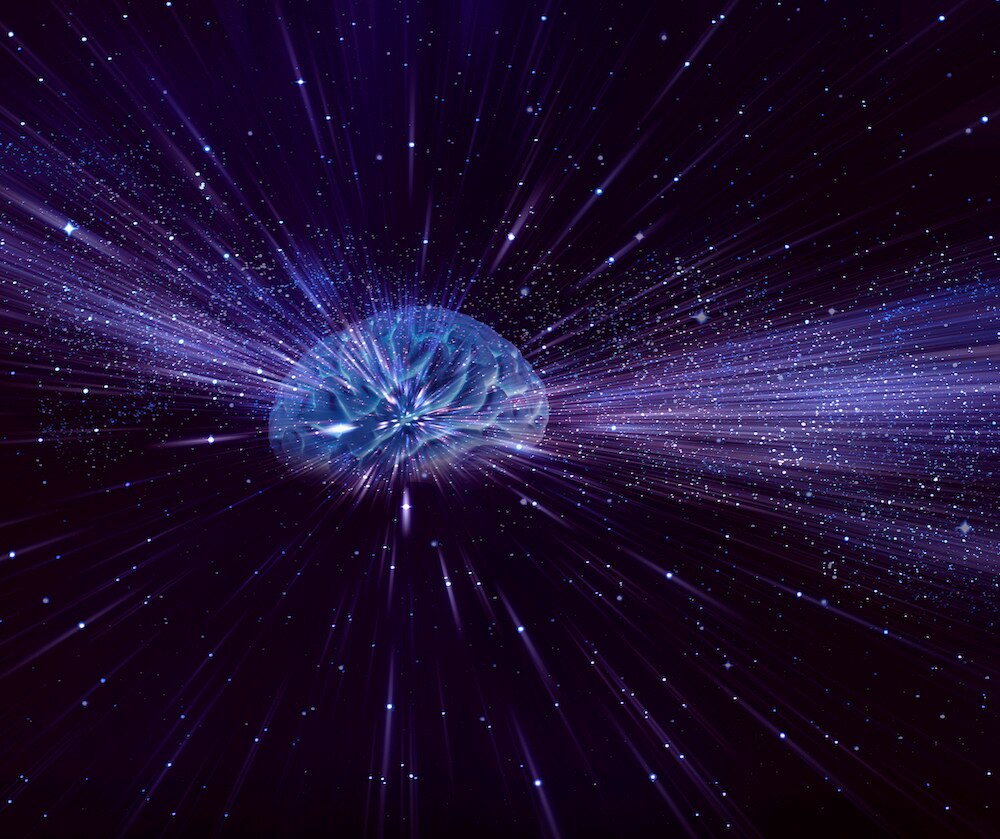Create a free profile to get unlimited access to exclusive videos, sweepstakes, and more!
Spaceflight doesn’t just change astronauts’ bodies, it also rewires their brains
The times, they are a' changin' (in space).

It’s been more than 50 years since humans first left our planet and ventured into the reaches of space. Hundred of astronauts and cosmonauts have orbited the Earth and a select few have journeyed to the Moon to circle that desolate globe or set boots down on its surface.
In the decades since the beginning of the space race, we’ve learned a lot about how the human body interacts with the environment of space and what challenges we might face on long-duration missions to other worlds. Despite all of our knowledge, however, we know very little about how space travel impacts the brain.
A new study published in the journal Frontiers in Neural Circuits is the first to explore the way space changes the structure and wiring of the brain. Floris Wuyts, from the Lab for Equilibrium Investigations and Aerospace at the University of Antwerp, and colleagues, measured structural changes in the brains of astronauts and cosmonauts before and after flights to the International Space Station.
“It’s really pioneering work. We’re exploring not space itself but what space is doing to humanity,” Wuyts told SYFY WIRE. “It’s not all about muscle, it’s not all about bone and cardiovascular stuff and the inner ear. We have a brain, and it hasn’t really been touched upon before now.”
Wuyts first became interested in investigating structural changes in the brains of space travelers after attending the mid-winter brain conference at Copper Mountain in 2009. There, he saw a presentation analyzing the brains of soldiers who had suffered blast injuries. That study was using a method known as tractography which uses MRI scans to visualize nerve pathways in the brain.
“I thought it seemed like an interesting thing to do in astronauts and cosmonauts. At the time, I had no clue what we would find,” Wuyts said.
Gathering data about the ways space changes the brain in real time is a particular challenge. MRI machines weigh thousands of kilograms and getting one into orbit would be a considerable undertaking. Instead, the team took brain scans before and after flight to look for changes in nerve pathways. Upon returning to Earth, they found that astronauts and cosmonauts had considerable changes in brain structures related to motor function.
“Space is an extreme environment. It’s similar to if you went to Antarctica or the deep sea. There’s no other option but to adapt and apparently our brain is quite good at adapting,” Wuyts said. “Going to space requires you to adapt to the fact that the way you move around is totally different to how you move on Earth.”
At present, it’s unclear how long it takes for the brain to rewire itself in order to operate in space, but the resulting changes appear to persist for months or longer after returning to Earth.
Scientists took additional scans eight months after cosmonauts returned to Earth and found that the new nerve pathways were still present. They believe these pathways imprint themselves on the brain in a permanent or semi-permanent fashion, such that astronauts who conduct subsequent flights more easily adapt to the environment than they did during their first visit.
“We think it’s like a bimodal system. They can swap between one and another. What we see is connectivity, but even if a connection is there, it doesn’t mean it will be used. It’s like if you’re riding a bike or a motorcycle, even if you only do it once in a while, the wiring is there once you learn it,” Wuyts said.
The impact of the research has potential for developing better training systems for future astronauts, by helping them more quickly develop the required nerve pathways. It also has potential applications here on the ground.
Wuyts found similarities in the way astronauts’ brains are wired after flight and the brain wiring of patients suffering from vertigo. Earth-bound vertigo patients don’t have the benefit of before and after brain scans but analyzing the structural changes in space travelers can provide a sort of roadmap, telling doctors and scientists where to look and how the brain adapts or maladapts under different circumstances.
Understanding the impact of space travel on the brain will be a critical step in the future of human spaceflight, particularly as we move toward crewed missions to Mars. Our first steps on the red planet won’t be very impressive if we can’t even stand up when we get there.


























